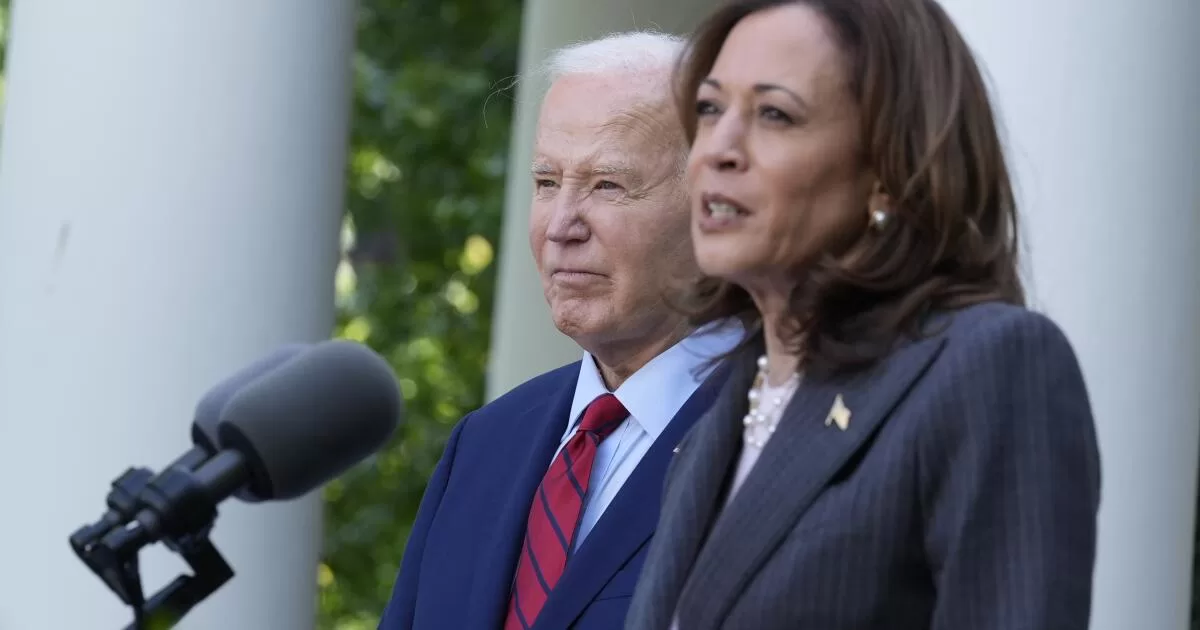The Democratic Party is about to find out what it’s like to compete in a snap election, like the ones in Britain, France and other parliamentary systems that hold quick elections with little notice.
Only in this case, it will be one-sided. They will be facing an opponent, former President Trump, who has been running since 2022, secured his party’s nomination in March and staged a highly choreographed convention last week.
There’s “no template for it,” said David Axelrod, former President Obama’s lead strategist.
Building a new campaign around Vice President Kamala Harris, or whomever secures the Democratic nomination, will be an immediate and daunting challenge now that President Biden announced Sunday that he will bow out of his reelection campaign.
“A presidential campaign now is a $2-billion startup that’s open for business for two weeks,” said Stuart Stevens, a strategist for Republican Mitt Romney’s 2012 presidential campaign. “Starting from scratch is not impossible, but it’s a great disadvantage.”
Stevens, who opposes Trump, said selecting Harris to replace President Biden atop the ticket is “100% the best” scenario for building a campaign infrastructure and crafting a message.
She could inherit hundreds of campaign workers and an organization that is built around ground-level organizing in anticipation of a close election and a message geared toward Biden’s accomplishments.
Within hours of Biden’s announcement Sunday, the campaign changed the name of its fundraising committee from “Biden for President” to “Harris for President,” giving her control of its $91-million account.
“People will be out walking the precincts this afternoon for her,” Stevens said, compared with an alternative nominee who would need to start hiring staff and building a machine after the Aug. 19-22 Democratic National Convention.
But whether it’s Harris or not, the process is certain to be tough. She would have to pick a running mate, which normally takes weeks of extensive vetting, and she would have to hope that running mate blends in with her team, which she also has not selected.
In her statement Sunday, she nodded to the compressed time frame, noting that she has traveled extensively for the last year. “We have 107 days until Election Day. Together, we will fight. And together, we will win,” she wrote.
Her first big decision would be how much of Biden’s team to keep.
Harris ran in the 2020 Democratic primary. But the campaign ended in recriminations among top advisors, like many losing efforts.
She took only a few staffers with her when Biden selected her as his running mate, making her almost entirely dependent on his team.
Many of the people who worked on her 2020 primary campaign, who overlap extensively with Gov. Gavin Newsom’s political operation, were kept at arm’s length during much of her vice presidency.
And as speculation around Biden’s withdrawal began to swirl last month, Harris was extremely careful to avoid any sign that she was looking at her own potential future, stymieing her ability to assemble a staff or draft extensive plans.
Axelrod said the most difficult piece will be building trust with key campaign advisors, and fast.
“You’re asking folks you may not know to jump into a foxhole with you in a battle that is already in full fury,” he said, which may argue for retaining much of Biden’s structure.
Donna Brazile, a Harris ally who led Democrat Al Gore’s 2000 presidential campaign, said Biden’s staff needs to take a breath after placing all of their emotional energy behind him.
“Give them an opportunity to mourn,” she said. “Give them an opportunity to grieve.”
She said there would be plenty of time to build a plan around Harris.
“I could do a 90-day campaign without opening my eyes,” she said. “In the past the summer was the time we squandered in getting ready for the fall.”
